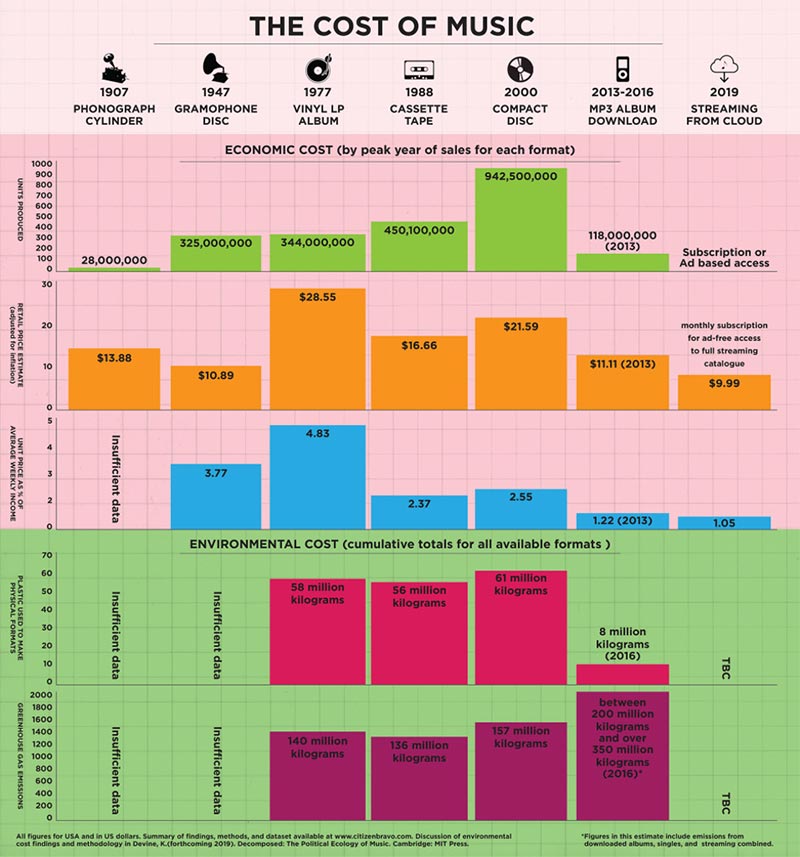Modern customers are now essentially borrowing products, rather than buying them outright. The linear sales model—exemplified by one-time purchases in bricks-and-mortar stores—has been disrupted by the rise of the subscription business model.
But what exactly does this change in buying behavior mean for both businesses and the world we live in?
Consider financial software giant Intuit, which once offered its popular TurboTax and QuickBooks products on CD. Every year, tax laws changed and the business was having to adopt those changes. This meant generating updated CDs on an annual basis, as well as having to deal with its outdated product.
According to an op-ed by MarketWatch, while Intuit’s revenue increased by 35% between 2006 and 2009, its net profit remained at only 14% due to its high operating-costs.
Several years later, the software business model started changing rapidly, shifting to cloud- and subscription-based product offerings. This change has not only generated opportunities for businesses like Intuit to evolve their product offerings and increase their profits and value to customers in real-time, but it also introduced more sustainable business practices.
Let’s take a deeper look at how cloud-based subscription models have impacted SaaS businesses like Intuit, as well as how the shift to the subscription model, in general, is contributing to global emissions targets.
Environmental benefits of the subscription SaaS model
1. Less material waste for unnecessary operating practices
As mentioned earlier, Intuit used to invest a large portion of its sales into creating updated-disks for new product version releases, ensuring that the latest tax and other financial laws were captured. The cost of producing each data CD and packaging it properly to avoid damage in transit would have been substantial from a business perspective.
CostHelper.com estimates a small business that has to produce a CD or DVD should expect to pay between 50 cents to $3 for each copy. From an environmental perspective, the carbon footprint of the manufacturing process probably wasn’t small either.
And since disk purchases can fluctuate greatly from year to year, when the next version came along any remaining outdated stock likely had to be either recycled or destroyed. If a disk ends up in a landfill, it can take 1 million years to decompose.
As data transference from physical copies to digital downloads or cloud-based software has grown in popularity, the demand for disks has drastically reduced or been eliminated for many businesses. Microsoft, Adobe, and Netflix are just a few other notable SaaS businesses that have done away with disks. And as a result, there’s also less need to use warehouse space.
2. Reduced storage needs means less energy in climate control
Even warehousing the disks before they were shipped would have been costly. To protect the data, disks need to be stored in a dry place, away from direct light and humidity, and at a temperature between 60 and 75 degrees Fahrenheit. About 15% of a unit’s cost is estimated for warehousing until the product can be shipped.
At about 75 cents per square foot spent on warehouse energy expenditures, the cost savings—both fiscally and environmentally—is significant.
3. Reduced shipping keeps transportation emissions down
Consider the energy required to physically ship a CD or DVD. This could mean shipping disks from an overseas facility where manufacturing costs might be less, mailing CDs to distributors and end users, and processing any necessary returns.
As software companies evolve to the cloud-based subscription model, less energy is expended in freight and shipping; not to mention the related costs are eliminated.
Software’s shift to the cloud and the subscription model has been beneficial in a lot of ways, but it’s not exactly a perfect solution from an environmental standpoint. At least, not yet.
How sustainable is cloud computing?
The technology made possible through cloud computing is impacting businesses in a huge way. Only a handful of years ago, a medium-sized business required a robust data center to run its IT infrastructure.
Data centers generate an enormous amount of heat and need to be cooled to avoid damage. In fact, between 30 and 55% of the energy consumption in a data center comes from the cooling system.
Many businesses today are leaning toward shared or colocated data centers, thus sharing the energy commitment. A business that accesses its SaaS software and related data via cloud storage only needs to pay for the services it uses, as opposed to incurring the upkeep and maintenance costs of housing its software and data on-premises.
Data needs to be stored somewhere though, and although commonly viewed as an invisible entity, data is very much a physical presence. Large shared data centers bear the energy brunt by having to be on all day, every day, to make sure data isn’t lost.
Consider cloud-based music streaming services. Delivering on-demand music to listeners around the world results in an estimated 25,000 to 40,000 tons of CO2 being released into the air every year. In fact, the later portion of the chart below shows that the more we digitize and revolutionize the music industry, the worse it becomes for the environment in terms of carbon emissions.

However, it’s not all doom and gloom. Like in the Intuit example, the shift to the cloud has dramatically reduced manufacturing, the use of plastic—as shown in the chart above—and the build-up of disks in landfills. And major players in the music streaming industry are working to improve on their sustainability.
For example, Spotify has committed to achieving carbon neutrality. It has also migrated its server operations onto the Google Cloud Platform (GCP). This move is enabled it to decommission its own data centres and reduce its carbon footprint by nearly 1,500 tons.
Many enterprises are also working to offset the high-energy costs associated with data centers with renewable energy options. For example, in 2017, Google began purchasing 100% renewable energy via wind and solar power for its operations, including running its data centers.
Other tech giants are jumping onto efforts to reduce their carbon footprint as well. Amazon, for example, plans to use renewable energy for 80% of its operations by 2024, and plans to be using 100% renewable energy in ten years.
While environmental watchdog Greenpeace has been critical because the business is growing faster than it’s responding with renewable energy, Amazon underscores its commitment to the environment, and has thrown down the gauntlet for other tech businesses to match its efforts.
We’re done being in the middle of the herd on this issue—we’ve decided to use our size and scale to make a difference,” explained Jeff Bezos, Amazon founder and CEO. “If a company with as much physical infrastructure as Amazon—which delivers more than 10 billion items a year—can meet the Paris Agreement 10 years early, then any company can.”
Not to be outdone by Amazon’s pledge, Microsoft has committed to becoming ‘carbon negative’—removing more carbon from the environment than it emits—by 2030.
“Like most carbon-neutral companies, Microsoft has achieved carbon neutrality primarily by investing in offsets that primarily avoid emissions instead of removing carbon that has already been emitted. That’s why we’re shifting our focus,” Microsoft president Brad Smith wrote in a blog.
“In short, neutral is not enough to address the world’s needs.”
The environmental impact of other subscription-based businesses
It’s not just about SaaS or other tech products. The subscription-based business market as a whole is having an effect on environmental efforts.
A 2013 MIT study found consumer behavior largely impacts the potential environmental benefits of online orders. For example, online shoppers had a carbon footprint twice as small as a traditional shopper, which is great. However, it should be noted that customers who demand super-fast delivery nearly triples the transportation costs.
Meal kits, for example, are a unique way to keep down food waste. According to a study by the Food and Agriculture Organization of the United Nations, one third of all food produced in the world is wasted. But with meal subscriptions, food waste is much lower.
GOBankingRates reported that only 5% of men and women between 18 and 24 that subscribe to a food subscription service don’t use their purchases. Consequently, research suggests that meal kits have a smaller carbon footprint than traditional grocery shopping methods.
Other subscription businesses are positioned to provide alternatives to environmentally damaging packaging that comes with traditional purchases.
Imagine your toothpaste tube, for example. When it’s empty, do you try to recycle the package or do you just throw it away? Loop is changing the end-of-life for products people use every day. With a Loop subscription, customers receive products in durable, reusable containers. When the product is empty, consumers return the container, which is then cleaned and refilled for future use.
Greening the future with subscription-based businesses
The road to environmental sustainability is not a defined path yet; however, it’s gaining momentum, from startups to enterprise businesses.
As Jeffrey Wissink, founder of Navant Partners a Forbes Council Member, wrote: “…If ‘reduce, reuse, recycle’ are key tenants of environmental responsibility, a subscription … could allow me to efficiently reduce and reuse.”
But with all the steps businesses are taking to reduce their environmental impact on the earth, more changes need to be made.
Referring to Microsoft’s recent carbon-negative announcement, Elizabeth Sturcken from the Environmental Defense Fund said, “It’s a hat trick of sustainability leadership. But to really shift the needle on climate change, we need 1,000 other [companies] to follow-suit and turn rhetoric into action.”
What steps can your subscription business take to reduce your carbon footprint?








